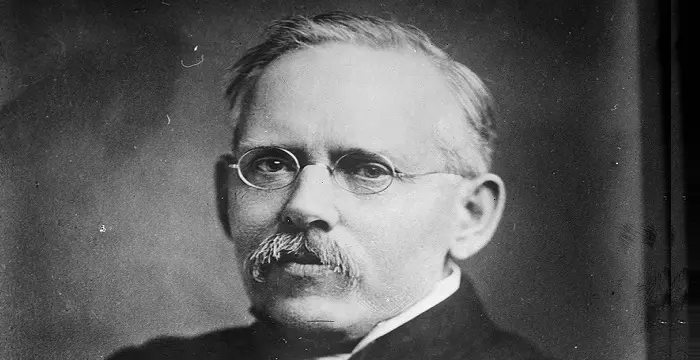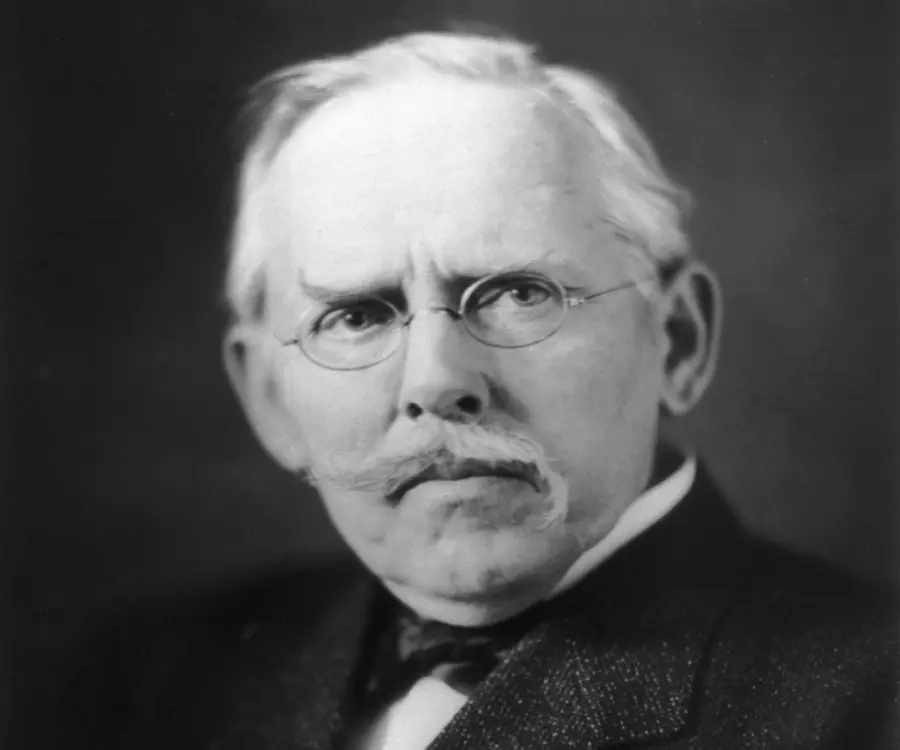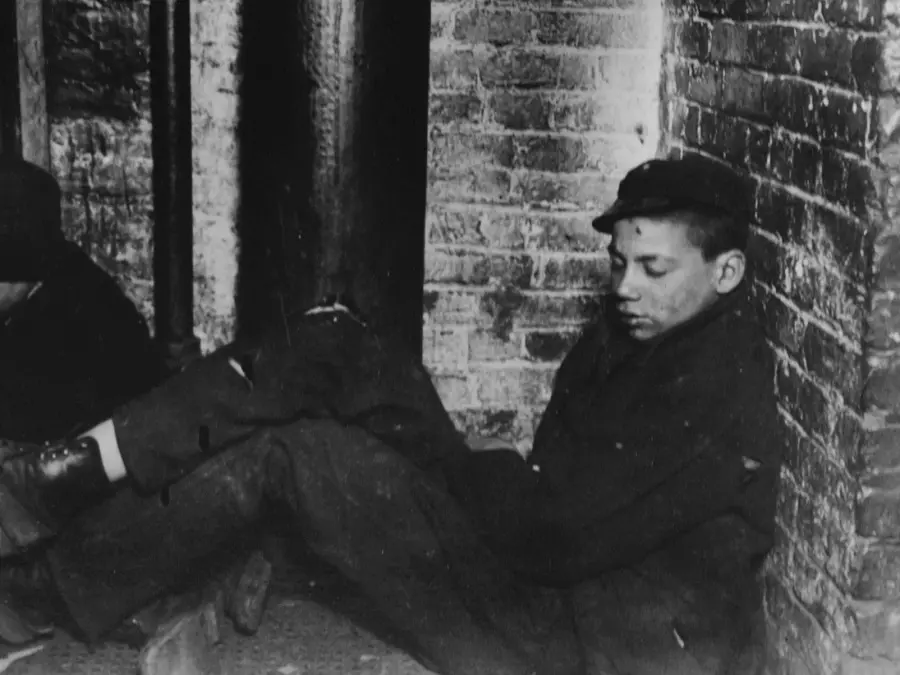
Jacob Riis - Activists, Family and Family
Jacob Riis's Personal Details
Jacob Riis was a significant Danish American social reformer who helped the downtrodden of New York City
| Information | Detail |
|---|---|
| Birthday | May 3, 1849 |
| Died on | May 26, 1914 |
| Nationality | American |
| Famous | Activists |
| Spouses | Elisabeth, Mary Phillips |
| Known as | Jacob Riis |
| Childrens | Clara C. Riis, John Riis (1882–1946) |
| Birth Place | Ribe |
| Gender | Male |
| Father | Niels Edward Riis |
| Mother | Carolina Riis |
| Sun Sign | Taurus |
| Born in | Ribe |
| Died at Age | 65 |
// Famous Activists
Temple Grandin
Temple Grandin is a well-known American writer, autistic activist and animal expert. This biography profiles her childhood, life, achievements, career and timeline
Susan Sontag
Susan Sontag is an American critical essayist, cultural analyst, novelist, political activist, filmmaker and playwright of international repute. Read on to find out more about her childhood, career, profile and timeline.
Serj Tankian
Serj Tankian is a famous American singer-songwriter and member of the band, ‘System of a Down’. This biography profiles his childhood, music career, life, achievements and timeline.
Jacob Riis's photo
Who is Jacob Riis?
Jacob Riis was one of the most eminent and hard-working social reformers of his time who adopted newer technologies to depict the life of the poor living in New York. He started off as a carpenter in Denmark and soon immigrated to United States to try his luck at the country of opportunities. It was after a series of odd and menial jobs that he finally got the opportunity to exploit his journalistic skills and communicate the sad state of affairs of the poor and the downtrodden to the rich and the upper class of the society. Aside from words, he used photographs to come up with a pictorial description of the bad living conditions of the poor and highlight the same to the ignorant. Riis was amongst the firsts to adopt and use the flashlight technology in his photography. Thus, he is also known as the father of photography. Using his photographic and journalistic talents, he exposed the crime and corruption, inefficiency of police men, problems of water supply and so on of the city. To get interesting and intriguing facts about the life and works of Jacob Riis, read further.
// Famous Taurus Celebrities peoples
Jason Simpson
Jason Simpson is the son of former NFL running back, broadcaster and actor O. J. Simpson. Check out this biography to know about his childhood, family, life, and little known facts about him.
Sophie Reade
Sophie Victoria Reade is a British model and reality show star. Let’s take a look at her family and personal life, including her age, birthday, boyfriends, and some interesting facts.
ASMR Aspen
ASMR Aspen is an American YouTuber. Check out this biography to know about her birthday, childhood, family life, achievements and fun facts about her.
Childhood & Early Life
Jacob Riis was born to Niels Edward Riis and Carolina Riis in Ribe Denmark. He was the third of the fifteen children born to the couple. While his father was a school teacher and an occasional writer, his mother worked as a homemaker.
For young Riis, his father was an influential figure who helped the former to read, learn and improve English. He spent much of his early years refining his English by reading novels by Charles Dicken and James Fenimore Cooper.
Career
Much against his father’s wishes of taking up a literary career, he longed to become a carpenter. By the time he turned sixteen, he started working as an intern in Carpentry Company. He moved to Copenhagen to complete his training.
Returning to Ribe in 1868, he was disheartened to see the lack of opportunity for work and hence migrated to United States in 1870, with a letter of reference to the Danish Consul, Mr Goodall.
It was only on the fifth day upon his arrival that he found work as a carpenter at Brady’s Bend Iron Works on the Allegheny River above Pittsburgh. Meanwhile, the world scenario kept changing as France declared war against Germany.
With a view to contribute to the war, he moved to New York and enlisted himself at the French consulate. However, since America had no plans of sending a volunteer army, he dropped the idea.
He briefly worked as a farmer on a farm in Mount Vernon New York before returning to New York City wherein he learned about the recruiting of soldiers for the war. However, due to his poor state of physical self, he was not offered the work.
He moved to Little Washington in New Jersey and started working at the brickyard. It was while working there that he heard about a group of volunteers who were going for the war. He moved to New York immediately but was too late
After days and months of struggle during which he had no work, shelter or food, he left New York and moved to Philadelphia. Under the care of the Danish Consul, Ferdinand Myhlertz, he revived his state of living.
He eventually found work as a carpenter in Scandinavian communities in the western part of the state. He gained fame as a carpenter due to quality work and low prices but was exploited by the employers.
Meanwhile, he attempted to make a career as a writer and started writing in both Danish and English. He even tried to get a job at Buffalo, a New York newspaper but was unsuccessful.
Frustrated by the exploitation, he returned to New York wherein he started working as a salesman, engaged in selling flatirons and fluting irons. No sooner he was promoted to the rank of a sales representative.
Meanwhile, he continued to make efforts to bag a journalism job which he eventually did after being appointed as a trainee in the New York News Association. His competency and working skills earned him the position of an editor for a weekly newspaper News.
After the newspaper became bankrupt, he, instead of finding yet another job, bought the company and worked hard to revive the newspaper out of the financial crisis.
Due to events occurring in his personal life, he sold off the newspaper at a far-stretching profit and moved to Denmark to marry his childhood sweetheart. Returning to New York, he started off as an editor of a south Brooklyn newspaper, the Brooklyn News.
He was then offered the job of a police reporter at the New York Tribune. In the position, he worked in the impoverished slums and crime ridden areas of the city. It was the awful state of living of the poor and the penurious that inspired him to work for the social cause.
He changed his writing style completely, infusing a terse and more melodramatic approach to the subjects, thus becoming one of the earliest reformist journalists of the time.
Meanwhile, the world of photography experienced a major technological boom with the introduction of flashlight, a German technology that allowed a photographer to take pictures in the dark.
Using the powerful device, he along with his three other friends used the device to photograph pictures of the dark slum areas. He then submitted a report of the same which was published in the newspaper, The Sun on the February 12, 1888 issue. With this, he became one of the first Americans to employ flash light.
For the next three years, he employed his own photographs and that of other commissioned photographers to write various articles. He then used the device to cover the poverty laden, crime stricken impoverished zones of Mulberry Street, depicting the harsh life of the slum areas and those faced by the poor and the criminals.
Accumulating the supply of photographs he then complied to form an illustrated essay. Though he submitted the same to the Harper’s New Monthly Magazine, his write-up was rejected. It was then that he gave public speaking a serious thought.
His first public speaking event was organized at the Broadway Tabernacle Church and sponsored by Adolph Schauffler. Assisted by lantern slides, the public speaking event was a major hit. No sooner the number of people exposed to his speeches increased by manifold.
Eventually, he was invited by the editor of Scribner's Magazine, to submit an illustrated article. In the 1889 Christmas edition, he submitted an eighteen page article by the title, ‘How the Other Half Lives’. The article included nineteen photographs and line drawings.
The success of the publication of the article led to an increasing demand for a full-fledged version of the same. To enliven his long-lost dream of writing a book, he quickly accepted the offer.
While he continued working as a reporter for the New York Sun during the day, the evenings were secured for public speaking. As such, he was only left with the night to work at the book.
In 1890, he finally came up with the book, ‘How The Other Half Lives – Studies Among the Tenements of New York’. The book contained the eighteen line drawings that had appeared in the Scribner's article and also seventeen reproductions using the halftone method. It was received with much success and appreciated by the readers.
Two years later, he came up with a sequel, ‘Children of the Poor’, which provided a detailed account of the life of the children that he had encountered in the slum areas and poverty zones.
He continued to serve as a reporter and author in the coming years. While his articles in the newspaper highlighted the harsh realities of the society and the corruption and the crime, his books offered a detailed account of the on-going battle with life in the shantytowns of the big cities.
It was during this time that he befriended Theodore Roosevelt who was all praises for the acute finesse and work of this activist reporter and photographer. The relationship lasted until Roosevelt’s appointment as the President and after that as well.
In 1901, he penned his autobiography, titled ‘The Making of an American’. Thereafter, he came up with a number of works including, ‘The Battle with the Slum’, ‘Children of the Tenements’, ‘Is There a Santa Claus?’, ‘Theodore Roosevelt, the Citizen’, ‘The Old Town’, ‘Hero Tales of the Far North’, ‘Neighbors: Life Stories of the Other Half’
Personal Life & Legacy
It was at the age of sixteen that he first fell in love with Elisabeth Gj�rtz, the 12-year-old adopted daughter of the owner of the company for which he worked as an apprentice carpenter.
He proposed her several times during his life, but each time she rejected his offer. Finally, it was after the death of her fianc�e that she accepted his offer for marriage.
The two married in Denmark and later moved to New York. They were blessed with three children, a daughter, Clara C. Riis and two sons John Riis and Edward V. Riis.
In 1905, tragedy struck him in the personal front as his wife, Elisabeth, fell ill and died. Two years later he tied the nuptial knot again with Mary Phillips and relocated with her to a farm in Barre, Massachusetts.
He breathed his last on May 26, 1914 and was survived by his wife and children.
Posthumously, he was honoured, together with Walter Rauschenbusch and Washington Gladden, with a feast day on the liturgical calendar of the Episcopal Church (USA).
Several parks, educational institutions, playgrounds and districts have been named after him.
Trivia
‘How The Other Half Lives’ is a book penned by this Danish American social reformer who highlighted the impoverished living condition of the poor in New York City through a write-up and pictorial description.
// Famous American peoples
Wentworth Miller
Wentworth Miller is an American actor and screenwriter who achieved recognition for his role in the TV series ‘Prison Break’.
Jason Simpson
Jason Simpson is the son of former NFL running back, broadcaster and actor O. J. Simpson. Check out this biography to know about his childhood, family, life, and little known facts about him.
Melissa Brim
Melissa Brim is the ex-girlfriend of former professional boxer Floyd Mayweather Jr. Check out this biography to know about her birthday, childhood, family life, achievements and fun facts about her.
Jacob Riis biography timelines
- // 3rd May 1849Jacob Riis was born to Niels Edward Riis and Carolina Riis in Ribe Denmark. He was the third of the fifteen children born to the couple. While his father was a school teacher and an occasional writer, his mother worked as a homemaker.
- // 1868 To 1870Returning to Ribe in 1868, he was disheartened to see the lack of opportunity for work and hence migrated to United States in 1870, with a letter of reference to the Danish Consul, Mr Goodall.
- // 22nd Feb 1888Using the powerful device, he along with his three other friends used the device to photograph pictures of the dark slum areas. He then submitted a report of the same which was published in the newspaper, The Sun on the February 12, 1888 issue. With this, he became one of the first Americans to employ flash light.
- // 1889Eventually, he was invited by the editor of Scribner's Magazine, to submit an illustrated article. In the 1889 Christmas edition, he submitted an eighteen page article by the title, ‘How the Other Half Lives’. The article included nineteen photographs and line drawings.
- // 1890In 1890, he finally came up with the book, ‘How The Other Half Lives – Studies Among the Tenements of New York’. The book contained the eighteen line drawings that had appeared in the Scribner's article and also seventeen reproductions using the halftone method. It was received with much success and appreciated by the readers.
- // 1901In 1901, he penned his autobiography, titled ‘The Making of an American’. Thereafter, he came up with a number of works including, ‘The Battle with the Slum’, ‘Children of the Tenements’, ‘Is There a Santa Claus?’, ‘Theodore Roosevelt, the Citizen’, ‘The Old Town’, ‘Hero Tales of the Far North’, ‘Neighbors: Life Stories of the Other Half’
- // 1905In 1905, tragedy struck him in the personal front as his wife, Elisabeth, fell ill and died. Two years later he tied the nuptial knot again with Mary Phillips and relocated with her to a farm in Barre, Massachusetts.
- // 26th May 1914He breathed his last on May 26, 1914 and was survived by his wife and children.
Jacob Riis's FAQ
What is Jacob Riis birthday?
Jacob Riis was born at 1849-05-03
When was Jacob Riis died?
Jacob Riis was died at 1914-05-26
Where was Jacob Riis died?
Jacob Riis was died in Barre
Which age was Jacob Riis died?
Jacob Riis was died at age 65
Where is Jacob Riis's birth place?
Jacob Riis was born in Ribe
What is Jacob Riis nationalities?
Jacob Riis's nationalities is American
Who is Jacob Riis spouses?
Jacob Riis's spouses is Elisabeth, Mary Phillips
Who is Jacob Riis childrens?
Jacob Riis's childrens is Clara C. Riis, John Riis (1882–1946)
Who is Jacob Riis's father?
Jacob Riis's father is Niels Edward Riis
Who is Jacob Riis's mother?
Jacob Riis's mother is Carolina Riis
What is Jacob Riis's sun sign?
Jacob Riis is Taurus










